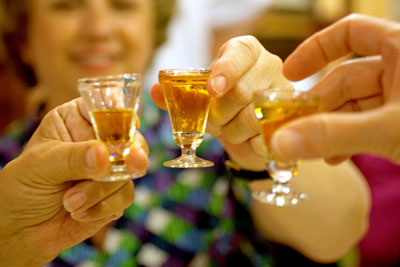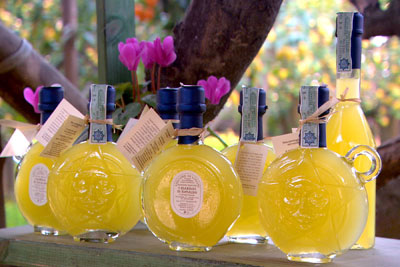Europe distilled
This item appears on page 58 of the December 2012 issue.
Finishing dinner at Rome’s Ristorante da Fortunato, my friend Stefano explained that his greatest joy is an after-dinner drink called grappa. I tried my best to enjoy the local firewater and failed.
Sipping the grappa, Stefano instructed me, “You must not be in a hurry when taking a grappa!”
He savored it carefully, sniffing the aroma and lingering over every taste. He then told me that his ultimate joy is to have a glass of grappa — and a Tuscan cigar — while cruising on his sailboat to Corsica.
And so it goes all over Europe. Each nation has its own brand of moonshine — a distilled concoction that burns your throat, waters your eyes, and clouds your mind till you think you can drink like you’re a native. Trying these regionally produced spirits and liqueurs can be a great cultural experience — and brings out fun and fascinating facets of my favorite continent.
While many Americans are familiar with whiskies and brandies, there’s a cornucopia of other specialty spirits in Europe, many made from fruits. Italy’s grappa, for example, is made from winemaking leftovers — skins, pulp, seeds and stems — distilled into a clear, potent brew. If you can’t take it straight, try a shot of it in a cup of espresso, which the Italians call caffe corretto (corrected coffee).
Ginjinha is one of my favorite Portuguese drinks. This sweet liqueur is made from the sour, cherry-like ginja berry, sugar and alcohol. It’s sold for less than $2 a shot in funky old shops throughout Portugal. Buy it with or without berries (“com elas” or “sem elas”; that’s “with them” or “without them”) and, if you want it poured from a chilled bottle, gelada — very nice.
In Greece, cloudy, anise-flavored ouzo, supposedly invented by monks on Mount Athos, is worth a try even if you don’t like the taste of black licorice. Similar to its Mediterranean cousins, French pastis and Turkish raki, ouzo turns from clear to milky white when you add ice or water. (Don’t drink it straight.) Greeks drink it both as an aperitif and with food.
Each Eastern European country has its own distinctive firewater, most of them a variation on slivovitz, a plum brandy so highly valued that it’s the de facto currency of the Carpathian Mountains (and often used for bartering with farmers and other mountain folk).
In Hungary, for a more straightforward spirit, try palinka, a powerful drink made from various fruits, most often szilva (plums) or barack (apricots).
In Germany and Austria, put down your beer stein and sample some Schnapps.
One of the best places for Teutonic home brew is Salzburg, Austria. Look for Sporer [website in German] on the city’s main drag; it’s a family-run distillery and retail shop that’s been around for a century. Their many firewaters are in jugs at the end of the bar: Nuss is nut, Marillen is apricot (typical of this region), the Kletzen cocktail is like a super-thick Baileys with pear, and Edle Brande is the stronger schnapps.
One of the most notorious European specialty drinks is absinthe, the highly alcoholic, herb-based beverage popular among artists and writers in the late 1800s. Van Gogh and Gauguin had their falling out, thanks, in part, to a night of absinthe drinking. That same night, van Gogh sliced off part of his earlobe and presented it to a prostitute.
Considered dangerously addictive, in 1915 absinthe was banned in France, but it’s legal again there now.
There’s a ritual to drinking it that requires a special glass and a slotted spoon. First pour a shot of absinthe into the glass, then place a sugar cube on the spoon and trickle cold water slowly through the cube into the drink. The green liquid turns cloudy as the sugary water releases the scents of absinthe’s main flavorings: wormwood, anise and fennel.
If you want to know more about “la fee verte” (“the green fairy,” absinthe’s nickname), visit the Musée de l’Absinthe in Auvers-sur-Oise, northwest of Paris. It’s located there for a reason: Auvers is also the site of van Gogh’s suicide and grave.
Compared to the Goth green of absinthe, limoncello is like bottled sunshine. This is Italy’s candy-like liqueur made from lemons. Italy is one of the world’s largest producers of lemons, and its Sorrento area specializes in limoncello. Sip it chilled after dinner for a “bella Italia” experience.
While taste-testing your way through Europe is fun, there’s another reason for barhopping: you’re sharing the local stuff with local people in local bars. So ask that person sitting nearby to suggest his or her favorite. It may singe your eyebrows, but you’ll never forget it.


